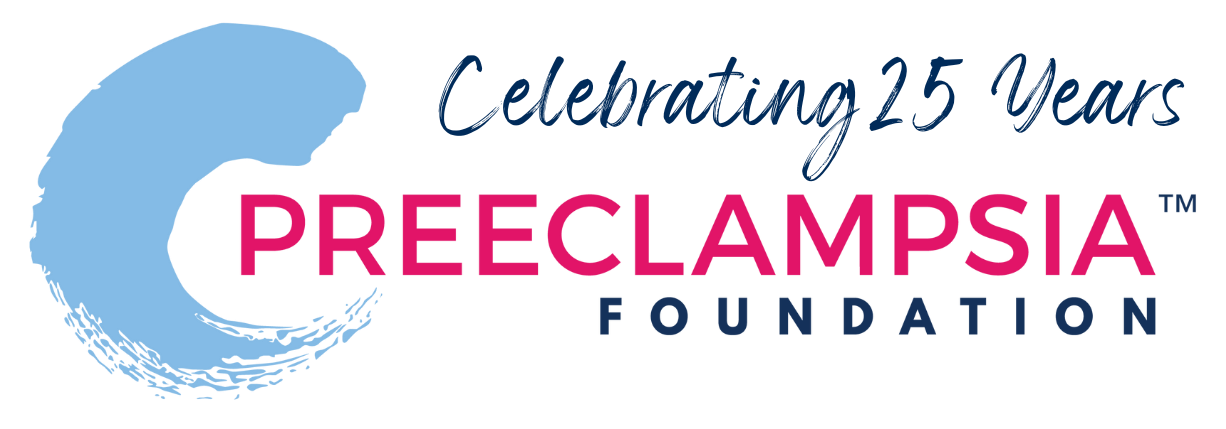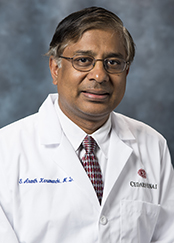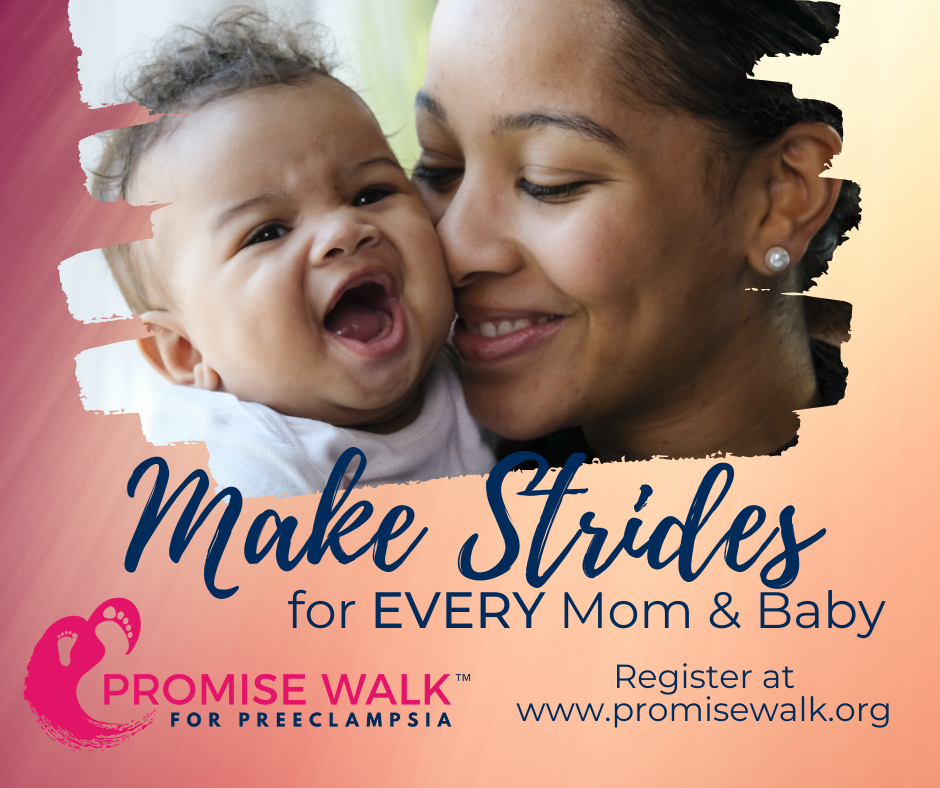
Foundation Celebrates 20 Years
Recognizing Progress, Renewing Commitment
In 1999, the National Institutes of Health referred to preeclampsia as a “rare and orphaned” disease, not because it was rare, but because it was “orphaned” – with no advocacy group working on its behalf.
A group of committed volunteers took up the mantle and the Preeclampsia Foundation was incorporated, as a nonprofit organization, on August 29, 2000. For 20 years, the Foundation has focused on education and awareness, working with healthcare providers to utilize the best practices for identification and treatment of the disorder, advocating for legislation to improve maternal health, and catalyzing research for a cure. Our story is your story and we will use the rest of 2020 to tell how you made this possible.
Today, over 2 million unique visitors rely on the foundation’s website for information and resources. Thousands of healthcare providers distribute the Foundation's patient education material, and a research registry of over 6000 survivors is used for numerous studies, including several that are funded by the Foundation through its Peter Joseph Pappas Research and Vision Grant programs.
As a partner in the Alliance for Innovation on Maternal Health (AIM), a voting member of the Council on Patient Safety in Women’s Healthcare, and as a member of numerous state, national and international task forces, the Foundation works to improve outcomes by bringing the lived experience to guidelines, best practices, research studies, and quality improvement initiatives.
The Society for Maternal Fetal Medicine’s (SMFM) 2020 president Dr. Judette Louis adopted preeclampsia as the focus of her presidential platform in recognition of the Foundation’s work and to advance preeclampsia’s research and clinical agendas.
An influential voice in federal policy, the Preeclampsia Foundation played an instrumental role in critical legislation like the Preventing Maternal Deaths Act, signed into law in late 2018.
“While we are proud of our accomplishments, our commitment today is stronger than ever,” says Preeclampsia Foundation CEO Eleni Tsigas, who started as a volunteer and has led the organization since 2009. “With 60% of maternal deaths due to preeclampsia considered preventable[1], our work is far from done,” says Tsigas.
[1] Main EK, McCain CL, Morton CH, Holtby S, Lawton ES. Pregnancy-related mortality in California: causes, characteristics, and improvement opportunities. Obstet Gynecol. 2015: 125(4):938-947
2020 Visionary
Dr. Thomas Easterling
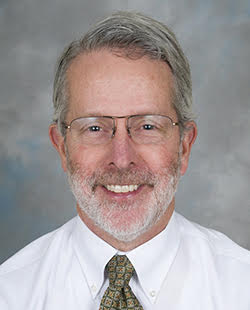
We remember a day 20 years ago when a small group of preeclampsia survivors and providers set out to make a difference in the lives of moms and babies. As we celebrate “20 Years Later: Recognizing Progress and Renewing the Commitment”, we will share the perspective of these visionary leaders, the impact we've made and their vision for the future.
He was there from day one. Dr. Tom Easterling, a maternal fetal medicine specialist, a preeclampsia expert, and passionate advocate for the diagnosis and treatment of hypertensive disorders of pregnancy, sat down with us regarding his perspective on what the preeclampsia community has accomplished, what remains to be done, and his advice for the future. Dr. Easterling leads the Foundation's Medical Advisory Board and serves as a ex-officio member of the Board of Directors. We sat down with him to get his perspecitve on the last 20 years.
1. In the past 20 years, what progress has been realized in the field of preeclampsia?
We have come to realize that preeclampsia is the result a very complex interaction between factors associated with endothelial health, immunological interactions at the maternal-placental interface, angiogenic regulation of placental invasion, and hemodynamic changes associated with pregnancy. Thus, the answer is not simple. Single molecule therapeutics are unlikely to be uniformly successful. Clinically, the adoption of time critical and goal based utilization of antihypertensive therapy and MgSO4 for acute severe hypertension has led to improved maternal outcomes. This has been particularly effective within health care systems.
Expansion of the impact of preeclampsia beyond the immediate period of pregnancy: modifiable pre-conceptional conditions that may impact outcomes; identification of long term cardiovascular risks revealed by pregnancy outcomes.
2. What is your greatest aspiration for the field of preeclampsia for the next 20 years?
Disparities in access to and utilization of health resources are associated with adverse maternal outcomes associated with hypertension in pregnancy. While we do not yet have the ability to prevent all preeclampsia, we do have strategies that can dramatically improve maternal outcomes. Barriers to care are in some cases straight forward, full equable funding of prenatal care. Yet, barriers to full utilization of care are more complex. I would aspire to the full integration of pregnant women and women at risk to become pregnant into a health care system that helps them safely achieve their reproductive goals.
3. What do you think the Preeclampsia Foundation’s greatest achievement or impact has been?
The Preeclampsia Foundation has empowered women to be informed about and to advocate for their own health care – to trust themselves.The Foundation has brought preeclampsia with associated short-term and long-term to the attention of public policy and health related funding organizations.
4. Which of your many contributions to the Preeclampsia Foundation’s mission are you most proud of?
I have had great satisfaction helping women and families through complex hypertensive pregnancies. These experiences have probably given me the greatest personal satisfaction. I am proud of offering support and some guidance to the leadership of the Preeclampsia Foundation such that the organization has achieved a place of prominence among patient based health advocacy organizations.I am most proud of work expanding the understanding the hemodynamic and pharmacological basis for treatment of hypertension in pregnancy.
5. What message would you leave for the next generation of “visionaries” in the field?
Think critically. Be brave. Be creative. Old ideas and old assumptions are not likely to move us forward. “I don’t understand,” is often the first step to a better understanding. Expand your clinical exposure to preeclampsia and let these experiences drive your questions and ideas. Remember the mothers and families affected by preeclampsia and let them serve to motivate you.
6. What are you most hopeful about?
Am I hopeful? I do see ever improving attention to early diagnosis and critical surveillance and treatment of hypertensive disease in pregnancy. These efforts are penetrating deep into all levels of health care systems to the benefit of many women. I am hopeful, but not certain, that services to pregnant will be at the vanguard of effectively expanded health care access. The maps of high maternal mortality and lack of access remain overlapping. I am hopeful when I see medical students, residents and fellows who are bright and well educated with understandings of reproductive biology beyond what we ever had. I am less hopeful when I see them consumed by institutional medicine that does not seem to value innovation and medical progress over, or on par with the generation of RVUs. I am not sure I could have found success in this environment.
2020 Visionary
Dr. S. Ananth Karumanchi
1. In the past 20 years, what progress has been realized in the field of preeclampsia? (research or clinical care)
While we do not understand the origins of the disease, we have a much better understanding of the pathways that lead to the clinical signs and symptoms of the disease. 20 years ago, the disease was largely descriptive; however we now have characterized molecules that can give you a quantitative burden of the disease in a woman and that can be used for the early diagnosis of the disease.
2. What is your greatest aspiration for the field of preeclampsia for the next 20 years?
To develop therapies based on a sound mechanistic understanding of the disease. Because we now have deep understanding of the pathways that mediate disease signs and symptoms, it is possible to develop personalized therapies that target specific pathway in a given patient. I am hopeful that these therapies will not only lower maternal morbidity, but also extend pregnancies in a safe fashion and avoid prematurity.
3. What do you think the Preeclampsia Foundation’s greatest achievement or impact has been?
- developed very useful website and educational material that has helped raised awareness of the disease for both patients and family members
- supported research by providing start-up funding for young investigators
- helped create new legislation such as “Preventing Maternal Death Act”.
4. Which of your many contributions to the Preeclampsia Foundation’s mission are you most proud of?
I have participated in the scientific review panels for the Foundation’s research grant programs. I have also participated in fund-raising events such as Saving Grace, Promise walk events etc. But I am most proud of engaging with patient community and working in developing policies to improve health care practices. Learning patient perspectives and incorporating that into guidelines (for example, ACOG task force in 2014 for pregnancy hypertension) was very rewarding.
5. What message would you leave for the next generation of “visionaries” in the field?
“Status Quo is not OK”. Next generation of scientists/visionaries need to make an impact (either in basic, clinical or health care policy) that will lead to better lives for women and their children.
6. What are you most hopeful about?
Given that the clinical disease can be measured quantitatively with biomarkers, I believe there is push now to tested targeted therapies. I am optimistic that we will be testing several biomarker-driven mechanism based therapies in the next 5-10 years
2020 Visionary
Dr. Catherine O'Connell
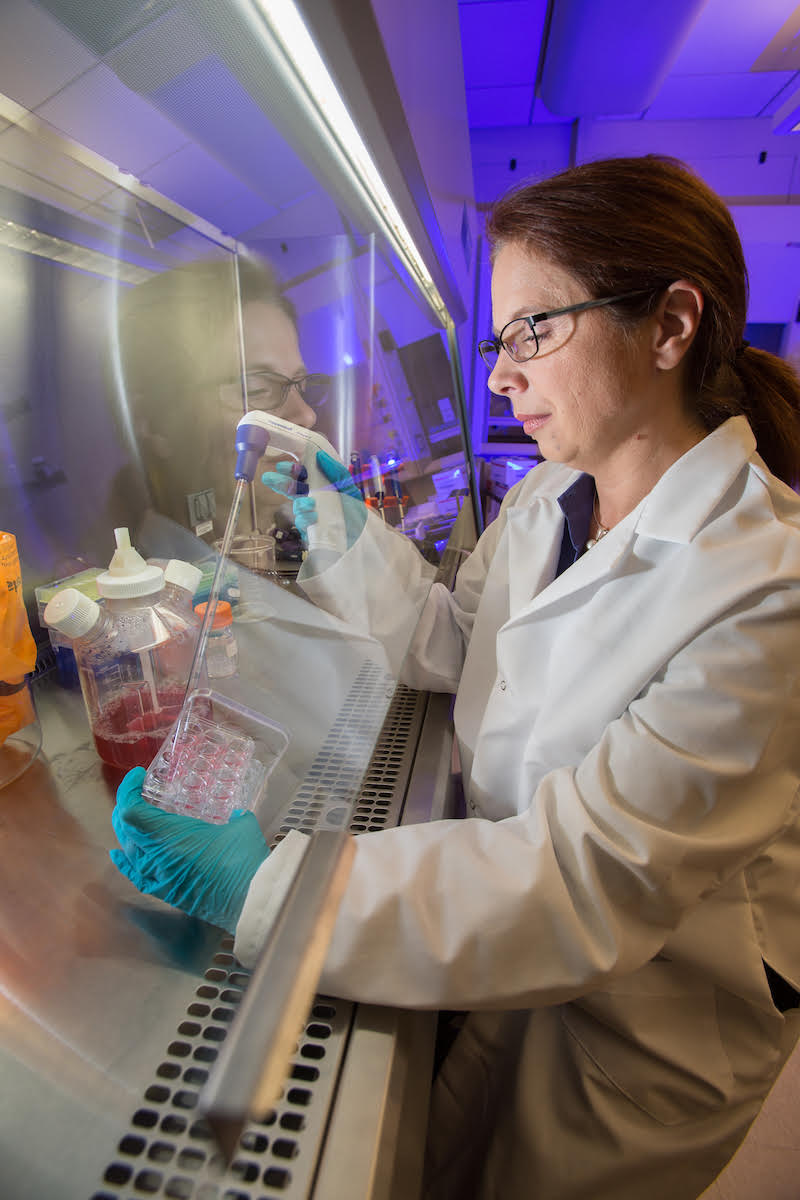
1. In the past 20 years, what progress has been realized in the field of preeclampsia? (research or clinical care).
This is a hard question to answer as a non-preeclampsia researcher. I think as a non-clinician, I continue to be impressed by and respect the positive impact of the quality implementations first initiated in California and now being mirrored in other states. The impact on maternal morbidity and mortality was both immediate and dramatic. On the basic research side, I am confident that the PF hasn’t missed an opportunity to support highly innovative research using the most current approaches to go to the edge of the unknown.
2. What is your greatest aspiration for the field of preeclampsia for the next 20 years?
More progress for more mothers. In an era where “personalized medicine” is being realized, better and more deconvolution of preeclampsia away from a syndrome towards better tailored diagnostics and treatments for all its myriad manifestations.
3. What do you think the Preeclampsia Foundation’s greatest achievement or impact has been?
Not one but two magnificent achievements: 1) on behalf of women and families affected by preeclampsia, the establishment of a community that hears their pain, amplifies their voices and rejoices in their progress towards successful pregnancies and healthy babies. 2) a patient-led organization that demands, funds and achieves focus, rigor, ethics and innovation by clinicians and researchers trying to make progress towards better understanding and therapy for preeclampsia. I think that many non-profits have been recognized for one or the other, achieving both is a bit special.
4. Which of your many contributions to the Preeclampsia Foundation’s mission are you most proud of?
Heavens, I don’t know that I’m particularly “proud” of any contribution that I have made. It is/was a relief to make tangible contributions to the mission of the PF because doing so helped me come to terms with the experience of a preeclampsia-affected pregnancy and the subsequent nerve-wracking fear I experienced when pregnant again. I’m awkward in person as anyone who ever met me on my occasional, stumbling outreach could tell you. I’ve NEVER been able to ask anyone for money. The early days of the PF’s bulletin boards served as therapy that helped me put my experience in context, as much as new way to share knowledge with other women who had been pulled from their trajectories by preeclampsia. I’m glad that my academic career and experience equips me to support the research arm of the PF. I’m a basic-science researcher in my professional life, I empathize with the angst, stress and process of formulating and presenting an idea for funding and it is a pleasure to support applicants through the review process of the Vision and PJP grant programs.
5. What message would you leave for the next generation of “visionaries” in the field?
It’s going to take a village of clinicians, basic and translational researchers, epidemiologists and teachers to advance. Your project might be the one that makes the biggest difference in the end. Have confidence that your contribution will have value, if the PF supports your research then it has recognized your potential to have a positive impact on this challenging problem.
6. What are you most hopeful about?
The PF has grown into a respected and impactful organization. Where once it spoke primarily to the community directly impacted by this disease and to the physicians that managed it, now it advocates at the highest levels of political life. It’s most recent drive to recognize and address racial disparities in outcome and access to optimal care reflects an organization that doesn’t falter in the face of big challenges. I’m glad that it can speak on behalf of all of us with authority and credibility.
2020 Visionary
Professor Chris Redman
1. In the past 20 years, what progress has been realized in the field of preeclampsia?
Broader view of preeclampsia – escape from the cage of historical definitions; Better understanding of placental causes; application of modern ‘omics’ technology to extend definition of mechanisms; successful reduction in maternal deaths by disciplined application of current knowledge (UK)
2. What is your greatest aspiration for the field of preeclampsia for the next 20 years? To understand its etiology so that it can be prevented.
3. What do you think the Preeclampsia Foundation’s greatest achievement or impact has been? To speak effectively for sufferers, inform and educate them and engage them in innovative research
4. Which of your many contributions to the Preeclampsia Foundation’s mission are you most proud of?
All contributions have depended on amazing colleagues with whom I have had the privilege to work.
Placental causes of preeclampsia -two stage model; discovery of syncytiotrophoblast microvesicles as placental-maternal signals that mediate normality and abnormality; discovery of the role of maternal systemic vascular inflammation; discovery that preeclampsia is not a different state but an extension of processes common to all women at term; appreciation of the importance of syncytiotrophoblast stress as a common final step in the pathogenesis of preeclampsia.
5. What message would you leave for the next generation of “visionaries” in the field?
There is no one cause, no one preventive measure and no simple treatment of preeclampsia; but good prenatal care and well timed delivery is already highly effective, although rarely expedited as well as it should be.
6. What are you most hopeful about?
That progress is possible and will be made aided by understanding that preeclampsia impacts on maternal and population health lifelong not just in the peripartum period. Once this is appreciated by governments and the public, appropriate resources can be mobilized proportionate to the scale of the problem.
2020 Visionary James Roberts, MD
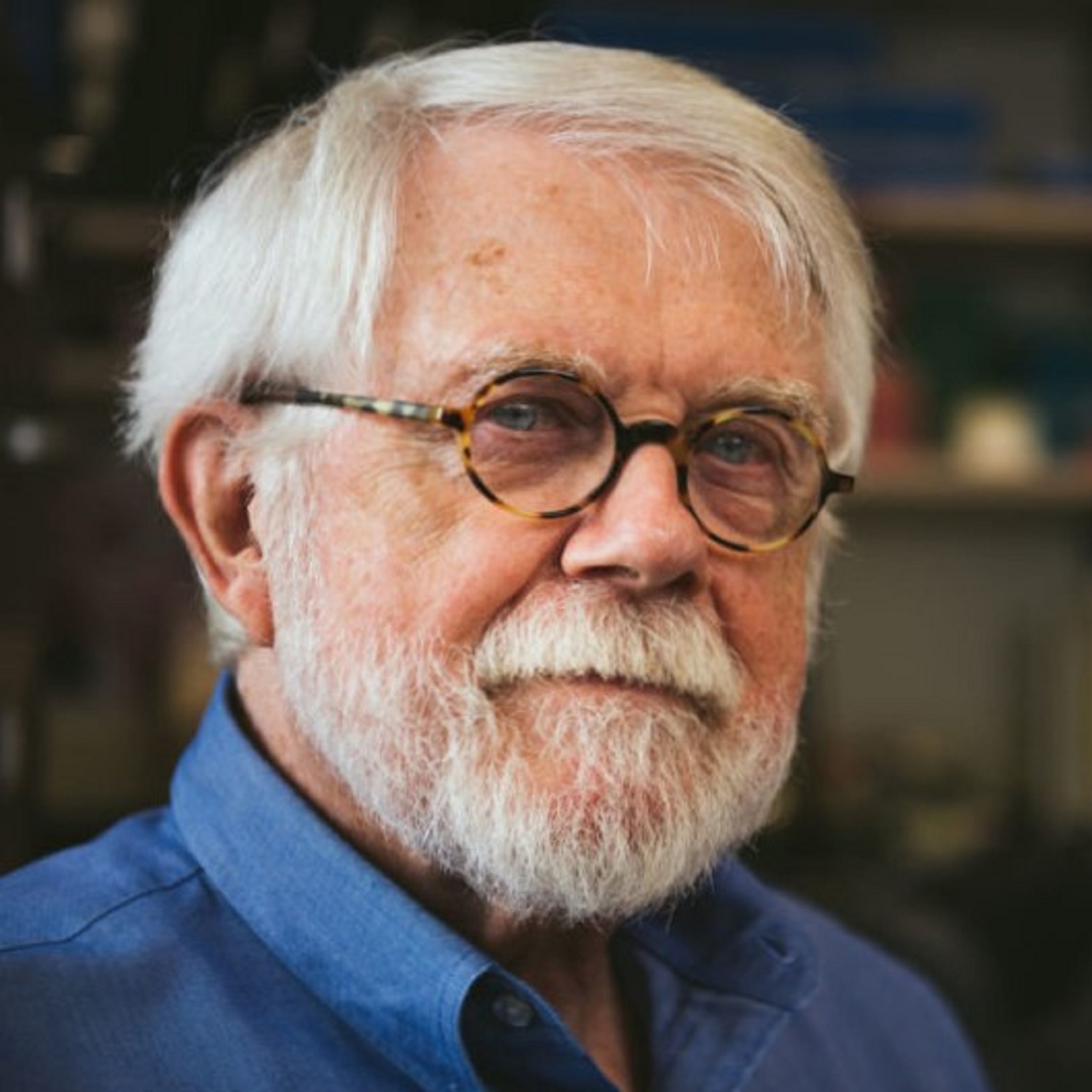
1. In the past 20 years, what progress has been realized in the field of preeclampsia?
In the last 20 years we come to increasingly appreciate that preeclampsia is far more than just hypertension and proteinuria that occurs in later pregnancy and is cured by delivery. It is now evident that preeclampsia is a multisystemic disorder that can occur during or after pregnancy and has significance long beyond delivery.
2. What is your greatest aspiration for the field of preeclampsia for the next 20 years?
As I have worked on trying to understand, predict and prevent preeclampsia for the last 30 years, I have become convinced that limited progress is best explained by the fact that preeclampsia is not the same disorder in all women. The idea that a placental insult is a major part of preeclampsia continues as an important component of our understanding. However, the insult, how it occurs and the response to it in different women is variable. Until we can decipher how this occurs in a particular woman or group of women to allow us to direct prediction and prevention at a particular pathway (that may not be relevant in all women) we will not be able to predict or prevent the disorder. Conversely, if we can resolve this, we will be achieve specific prediction and preventive therapy.
3. What do you think the Preeclampsia Foundation’s greatest achievement or impact has been?
I think the Foundation has several important achievements, education, advocacy, and a living database. I think the these largely converge on the major accomplishment, education. This has included the education of women to recognize potential signs and symptoms and to act on these, to providers to appreciate that women who recognize signs and symptoms are a valuable resource and their concerns should be heeded. Finally, the world (including funders and those who establish policy) need to know about preeclampsia and those who study and care for women with the disorder need to be aware of the questions and concerns of women with preeclampsia and who have had preeclampsia. The Foundation is meeting that need.
4. Which of your many contributions to the Preeclampsia Foundation’s mission are you most proud of?
I have worked to facilitate the advocacy of the Preeclampsia Foundation to guide research directions and care policies. However, I believe my own advocacy in favor of a living database and my choice to involve Dr. Hillary Gammill as its leader has provided a unique resource for the research committee.
5. What message would you leave for the next generation of “visionaries” in the field?
Pay attention! To patients, to investigations in other areas, to atypical finding (outliers) and resist the urge to stuff disparate findings into a “unifying hypothesis”.
6. What are you most hopeful about?
A group of bright new investigators is addressing preeclampsia with strategies not previously used and they are eager to collaborate and share data and materials. Also, the research community and research leadership are moving to make this work successfully. Young investigators are not just using new experimental and analytical strategies they are also coming up with new ideas and new approaches (e.g. perhaps preeclampsia involvement in later life cardiovascular disease is not just common risk factors but may be causally important and that perhaps something can be done to influence that causality. This is one of several unique concepts). Nothing is more important than new ideas, unless it is the capacity to “unravel” these ideas which requires sharing and collaboration. This is now becoming the norm for investigators,
Related Articles
1763040575.png)
The Preeclampsia Foundation, a US-based not-for-profit focused on improving outcomes from hypertensive disorders of pregnancy, has been announced as one of 80+ organizations that were awarded funding...

Hypertensive disorders of pregnancy are a leading cause of maternal death in the state of Indiana. To address this critical issue, the Indiana Hospital Association is teaming up with the Preeclampsia...
1753716089.png)
Preeclampsia survivors and their supporters from across the United States will hit the pavement on Saturday, August 23, 2025, as part of the sixth annual Promise Walk Wherever virtual event to benefit...
_(4)1737997628.png)
The Preeclampsia Foundation announced today the recipients of its 2025 Peter Joseph Pappas Research Grants. Based on the recommendations of its Scientific Advisory Council, the Preeclampsia Foundation...
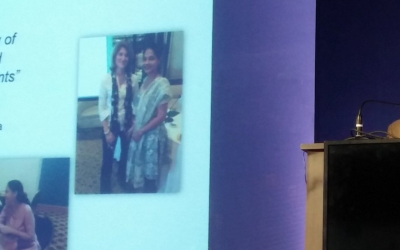
It’s with unimaginable gratitude that we recognize Dr. Tom Easterling, as he retires from his role as Director of the Preeclampsia Foundation Medical Advisory Board. To talk about Dr. Easterling...
